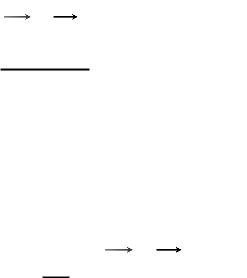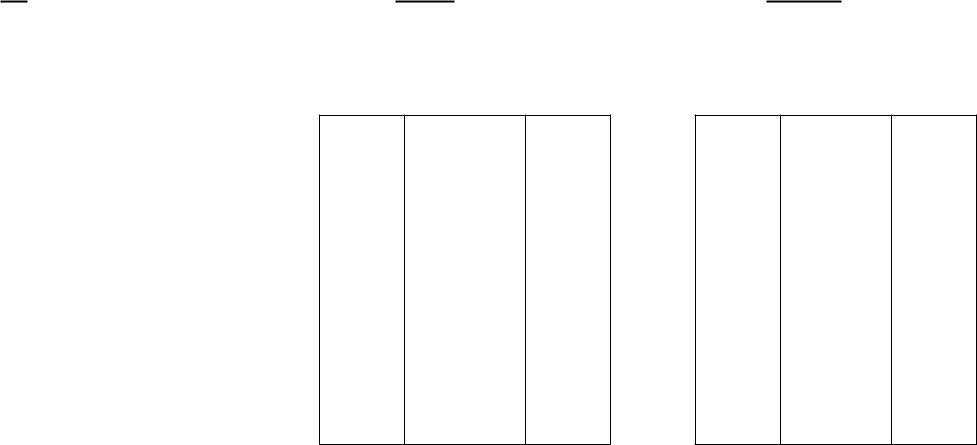
ИЭ / 6 семестр (англ) / Лаба / Seminar_04_Electrostatics homework
.pdf
Calculation Capacitance
By Charge and Voltage By Energy and Voltage
C = Uq
Where:
C is the capacitance,
q is the total charge of one conductor,
U is the potential difference between conductors
C = 2W
U 2
Where:
C is the capacitance,
W is the total energy of electric field, U is the potential difference
between conductors
|
|
SEMINAR 4. ELECTROSTAIC HOMEWORK |
21 |
|
|

How QuickField calculates the charge of a conductor?
The most common way for calculation the charge is using Gauss theorem:
q = D ds
S
The surface of integration S should satisfy the following requirements:
1.The surface should be closed and positively oriented (counterclockwise);
2.The surface should surround the conductor of interest, and contains no other conductors;
3.It is preferable to choose a surface in a region with small E-field perturbation;
4.Do not forget that S is a surface in 3D space.
It is visible in 2D model space by its trace (the cross-section).
|
|
SEMINAR 4. ELECTROSTAIC HOMEWORK |
22 |
|
|

How QuickField calculates the charge of a conductor?
The 3D surface of integration is given by its 2D cross-section that is a closed contour:
1.The edge contour, includes all conductor’s edges
2.The loose contour has some offset outwards the conductor boundary
|
|
SEMINAR 4. ELECTROSTAIC HOMEWORK |
23 |
|
|

How QuickField calculates the charge of a conductor?
 Click to switch on the integral calculator pane
Click to switch on the integral calculator pane
Click the button to see the integral value
When the contour is ready, the integral value is accessible by the integral calculator pane.
QuickField is able to integrate over a line, over a surface, and over a volume.
A volume and its side surface is limited by:
•the given contour in XY-plane, and
•the Zlength parameter in the out-of-plane Z-direction
|
|
SEMINAR 4. ELECTROSTAIC HOMEWORK |
24 |
|
|

How QuickField calculates the field energy?
The volume density w of electric field energy is calculated as:
w = D E
2
Integration of volume energy density is performed over the entire model area V:
W = w dv = 12 D E dv
V V
|
|
SEMINAR 4. ELECTROSTAIC HOMEWORK |
25 |
|
|

Calculation Capacitance
Please don’t forget to consider the symmetry factor
Using a simplest formula
C = 0 dS
Theory
ε0 |
8.85E-12 |
F/m |
ε |
4 |
|
d |
10 |
mm |
w |
100 |
mm |
L |
80 |
mm |
S |
0.008 |
m2 |
C |
2.83E-11 |
F |
|
28.333 |
pF |
By Charge and Voltage
C = qU
By Charge and Voltage
Qs |
2.96E-09 |
C |
U |
100 |
V |
C |
2.9642E-11 |
F |
|
29.642 |
pF |
By Energy and Voltage
C = 2W
U 2
By Energy and Voltage
W 1.48E-07 J
|
2.9644E- |
|
C |
11 |
F |
|
29.644 |
pF |
|
|
SEMINAR 4. ELECTROSTAIC HOMEWORK |
26 |
|
|

Please send your report together with all your QuickField files to sdubitsky@gmail.com before the end of April
Report content:
1.Task description and given data
2.Sketch of the geometry model with no mesh
3.Dependency of maximal field Emax on the number of mesh nodes (at least 5 points).
4.Emax dependency on the radius of the artificial outer boundary RO
5.Capacitance calculations:
-by a simple formula (theory)
-using charge
-using energy
6.Maximal field intensity Emax and the field in the middle Ec
7.Relevant screenshots at your choice
8.Be prepared to explain how and why you’ve set the boundary conditions
|
|
SEMINAR 4. ELECTROSTAIC HOMEWORK |
27 |
|
|
